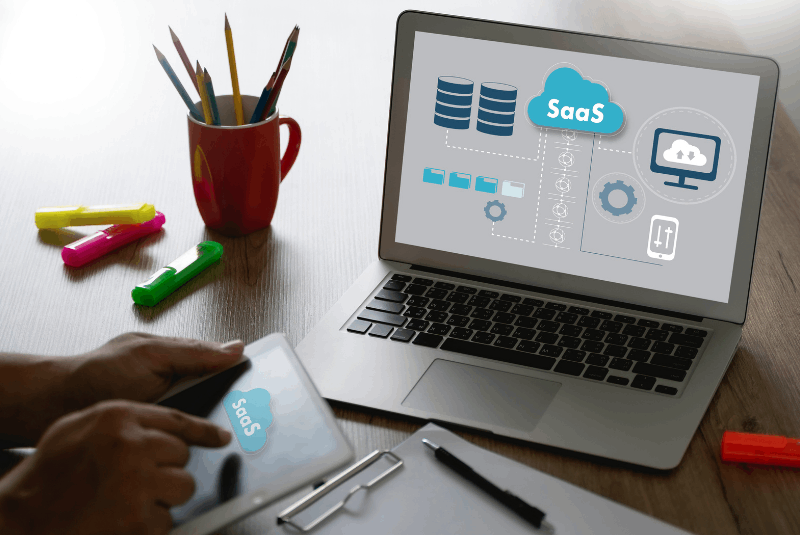In today’s digital world, Software as a Service (SaaS) usually refers to a new and alternative way to access Software instead of more traditional access methods. It is a way of delivering applications on the Internet – as a service. Instead of installing and maintaining the Software, you access it via the Internet, freeing yourself from complex software and hardware management. It is one of the three main categories of cloud computing as a service and platform for infrastructure.
One of the most promising concepts that have evolved today is SaaS-based applications, which refer to Software as a Service application. SaaS applications are software applications that use cloud computing to use the same software application through cloud access. Its cloud-stack counterparts have gained immense popularity in the SaaS software industry as a service and platform.
What is SaaS?
SaaS provides end-to-end software solutions that you purchase from your cloud provider on a pay-as-you-go basis. When you rent an app for your organization, users connect to the app over the Internet, typically using a web browser.
SaaS is one of three major cloud service models. The cloud service model is a category of services that cloud service providers (that is, companies that own and operate servers in various data centers) provide users and companies. The basic idea is that the “software” is centrally located somewhere on the server, and you connect when you want to use it. This means that you can get the latest version of the app. You can quickly fix security holes and quickly integrate patches.
Traditionally, software vendors have sold their Software to users. However, in SaaS, they actively provide and manage Software to their users through the cloud. They host and maintain the database and code needed to run the application and run the application on their servers. Thus, SaaS is more like a service than a product. “Cloud” refers to remote web servers in various data centers that host databases and run application code.
The difference between the SaaS model and traditional Software is that SaaS is not downloaded or installed on a computer or user device. It is one of the leading cloud computing applications (other than IaaS and PaaS).
A Few SaaS Examples
Salesforce is the largest SaaS company in the United States, with a $161.4 billion market capitalization. This is 2.8 times the value of the second-largest company, ServiceNow ($57.9 billion). Salesforce has grown in importance over the past year. February 2019, Salesforce has added $36.0 billion to its market cap. This is more than the total market value of Atlassian ($33.3 billion), the fifth-largest company on the list.
Shopify has grown as fast as Salesforce in the past year, adding 31.2 billion to its market cap. This has raised it to number three on the list, making it the third-largest company in the world.
Box Online Workspace allows professionals to collaborate with anyone, anywhere. Users can securely share large files via traditional links or custom URLs, protecting data and documents with permissions and password protection.
The box supports more than 120 file types, and users can preview content before downloading. All content sharing, editing, discussion, and approval is limited to a centralized file, and users are notified in real-time when changes are made. Box also automates tasks such as hiring and approving contracts, reducing recurrence, and reviewing cycles.
Advantages Of Software as a Service
It is a software licensing model that allows subscription-based Software to be accessed through external servers. Any user can access programs over the Internet instead of installing the Software on the user’s computer. It has many business applications, including file sharing, email, calendar, loyalty management, and human resources.
1. Cost Reduction
One of the most famous and obvious benefits of using Software as a Service to businesses is the cost benefits. There are no costs for purchasing and installing all Software and internal IT infrastructure if the Software is leased from a third party. Payment is made based on a subscription that depends on the use of the infrastructure.
2. Ease Of Accessibility
Software is readily available as a service application. A computer and a stable Internet connection are all that is needed to access and use cloud software. Using this method, the application can be easily accessed on any remote computer or mobile phone and can be used anywhere.
3. Effortless Scalability
When there is a need to add new users to a growing business, there is no need to purchase additional software licenses or server space. All you have to do is update your existing plan or SaaS app subscription to accommodate new users. This will come in handy if your business has an off-season trend, which will allow you to reduce your membership costs.
Trouble-free Upgrading your existing Software and hardware to newer versions is cumbersome. In many cases, businesses do not have the budget or IT human resources to upgrade the Software that runs every year. This makes the Software vulnerable to external threats.
On the other hand, when you choose a SaaS app, it will be less of a burden to you and remove significant fees from your home IT department. Additional bandwidth can be used for integration with other functions, such as internal applications.
4. Highly Resilient
Because IT infrastructure and your data are installed and stored in cloud storage provided by a service provider remotely, you can quickly resolve any damage or destruction on your business premises. It can be operated from any other site with an easy return to business and internet connection.
ITsGuru hopes your concepts are now clear with this Software as a Service Article.

